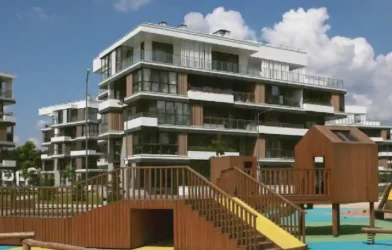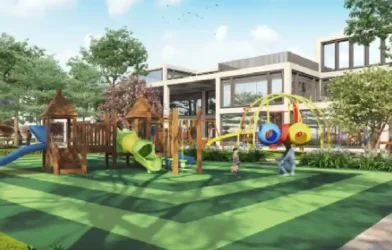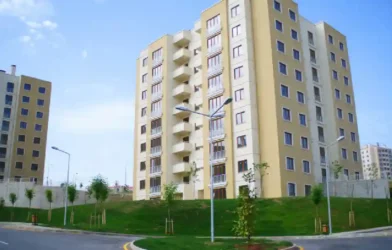Subtotal ₹0.00
By Amritanshu Roy, COO, Greenfield Advisory Singapore & Director 1 Oak (India)
The newly notified Building Construction and Development Byelaws, 2025 offer not just reform but a reset. More than a technical revision, this is a radical recalibration of UP’s urban operating system, with implications that stretch beyond real estate to livelihoods, sustainability, and the very structure of urban citizenship.
At the heart of these byelaws lies a philosophical shift: from permission to accountability, from delay to digital, from control to compliance. For decades, small landowners and first-generation developers—particularly in Tier 2 and Tier 3 towns—navigated a maze of opaque procedures, often greased by informal payments. Even minor home expansions could take months, if not years. The 2025 Byelaws have dismantled this status quo with clarity and purpose.
For the first time, residential plots up to 1,000 sq ft and commercial plots up to 300 sq ft require no prior approval at all—only a self-certified declaration filed online. For residential plots up to 5,000 sq ft and commercial up to 2,000 sq ft, architect-certified plans are sufficient. These streamlined protocols—backed by digital uploads of AutoCAD files—promise not only near-instant approvals but a 90% reduction in processing costs. In effect, the state is putting trust into the hands of professionals and citizens, shifting the centre of gravity from bureaucracy to expertise.
This isn’t just regulatory reform—it’s psychological empowerment. For the small landholder in Jhansi, the shopowner in Barabanki, or the contractor in Shahjahanpur, this reduces the state’s discretionary footprint and lowers the entry barrier into formal, planned development. It’s a direct attack on the shadow economy that has long shaped UP’s built form through informal layouts and semi-legal construction.
Liberalised FAR
But the reforms go beyond simplification. The most economically potent change lies in the reimagining of Floor Area Ratio (FAR)—the metric that governs how much can be built on a plot. The new byelaws adopt a layered approach: Basic FAR, Purchasable FAR (acquired for a fee), and Premium Purchasable FAR. Group housing projects along 24 to 45-metre roads now enjoy a FAR of 5.25 in built-up areas—more than double the previous norm—while plots along roads wider than 45 metres have no FAR cap at all. These revisions allow developers to go vertical, recalibrate project economics, and unlock value in land that was previously underutilised or encumbered by outdated density norms.
Boost to Mixed-Use & Green Development
Moreover, the byelaws actively promote mixed-use development—recognising that cities thrive when living and working coexist. Residential buildings on roads wider than 24 metres may now legally accommodate shops and offices. “Bazaar Streets” along 6-metre roads can feature ground and first-floor commerce. This formalises a vast swathe of informal activity that currently sustains millions across UP’s cities and towns—street vendors, tailors, grocers, mechanics—many of whom were excluded from earlier zoning regimes. By legitimising these micro-economies, the state has anchored social equity into spatial planning.
Environmental resilience and inclusion have also been smartly folded into the framework. EV charging points are now mandatory in 20% of parking areas in group housing projects. Green building incentives have been introduced to nudge developers towards sustainable construction. Minimum plot sizes for apartments have been reduced from 2,000 sq m to 1,000 sq m, allowing smaller developers to participate in affordable housing. There are also structured provisions for slum rehabilitation and inclusive housing mandates, ensuring that vertical growth doesn’t come at the cost of social displacement.
Equally notable is the byelaws’ recognition of urban reality: lakhs of existing buildings across UP were constructed under ambiguous or outdated norms. Instead of sweeping these structures under the carpet—or worse, demolishing them—the new rules provide regularisation pathways. Buildings that were non-compliant under previous byelaws but align with the 2025 provisions may now be brought into the legal fold through a compounding mechanism. This brings dignity and clarity to countless homeowners trapped in compliance limbo, and injects new liquidity into the secondary property market.
Implementation Challenges
But promise alone will not deliver progress. Implementation challenges are many—and significant. Delegating plan approval to architects requires robust accountability mechanisms. Fast-track portals assume digital literacy that remains uneven in rural and peri-urban UP. Time-bound NOCs from multiple departments—fire, irrigation, forest, airport, defence—will demand unprecedented inter-agency coordination. District panchayats, many of which lack trained planning staff, will now be responsible for enforcing byelaws on buildings larger than 300 sq m—a daunting mandate.
There’s also the matter of land records. The byelaws promise property transfers within 45 days, a revolutionary commitment in a state where land disputes clog courts. But this can only be achieved through digitised, tamper-proof land records—still a major institutional gap across much of Uttar Pradesh.
Road Ahead
Yet, for all its challenges, the scale and ambition of this reform must be acknowledged. These byelaws arrive alongside the Centre’s ₹1 lakh crore Urban Challenge Fund, meant to catalyse city-led economic growth. In aligning itself with national agendas—like Transit-Oriented Development (TOD) near Regional Rapid Transit Corridors—Uttar Pradesh is not just updating its planning manual; it is repositioning itself as a laboratory for next-generation urbanism.
Most importantly, the state has embraced trust-centric governance. By shifting from punitive approvals to accountable self-certification, it signals a deeper respect for citizen agency. It is not just building regulations—it is building trust. As bulldozers retreat from the headlines and construction cranes rise over Lucknow, Kanpur, Prayagraj, and Bareilly, Uttar Pradesh has crafted a framework that could redefine its cities—not just physically, but civically. If implemented with vigilance and adaptability, this could be the decade where Uttar Pradesh’s cities emerge not as symptoms of congestion and informality, but as engines of economic dignity and inclusive growth. The urban playbook has been rewritten. Now, the building begins.














